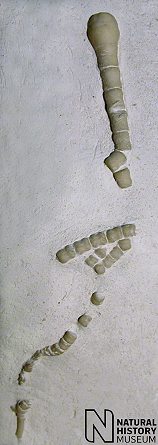 A A |
 B B |
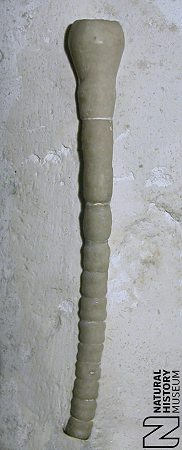 C
C |
 D
D |
|
BOURGUETICRINIDS |
These distinctive, worm-like crinoids occur throughout the White Chalk. The elements of the calyx are fused into a simple swollen form which merges into the stem, whilst the columnals appear as short rods with a parallel-sided or rounded dumb-bell profile. The calyx and columnals occur with great frequency as isolated skeletal elements. However, articulated material is very scarce and the arms are essentially never retained. The branching root-network (radix) is occasionally found, but not in association with the rest of the animal. A number of species are recognised, based largely on subtle features such as the profile of the calyx and the arrangement of its plates.
 A A |
 B B |
 C
C |
 D
D |
1). Bourgueticrinus ellipticus, very well preserved specimens with the calyx retaining a large portion of the stem; (A) x2.0, Bromley, Kent, BMNH (British Museum (Natural History) London) 46766; (B) x2.3, Charlton, Kent, BMNH 46781; (C) x3.0, Kent, Bowerbank Collection, BMNH E22116; (D) x2.0, Brighton, BMNH E22117 (calyx inserted?). Images © 2005 The Natural History Museum, by kind permission.
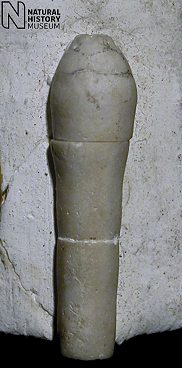 A A |
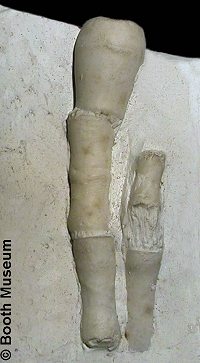 B B |
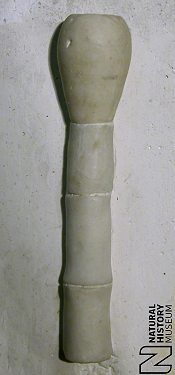 C C |
 D D |
2). Well preserved specimens, with the calyx retaining some part of the stem; (A) Bourgueticrinus cf. papilliformis, x4.3, Salisbury, Blackmore Collection, BMNH (British Museum (Natural History) London) E26929; (B) Bourgueticrinus ellipticus, x2.3, Willett Collection, Booth Museum, BMB 008843, by kind permission of John Cooper; (C) Bourgueticrinus ellipticus, x2.5, BMNH E170; (D) Bourgueticrinus ellipticus, x2.5, Sussex, Roy Strevens Collection. Images A and C © 2005 The Natural History Museum, by kind permission.
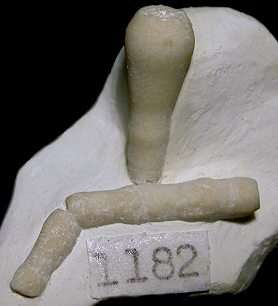 A A |
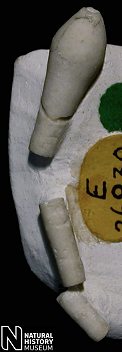 B B |
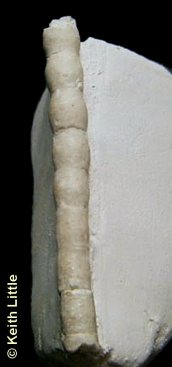 C
C |
3). Well preserved specimens; (A) Bourgueticrinus cf. fritillus, calyx retaining some part of the stem, x3.5, Culver Chalk Formation, Gaster's Pit 2, south of Lancing College, near Shoreham, West Sussex, Randell Collection, RR1182; (B) Bourgueticrinus papilliformis, calyx retaining some part of the stem, x3.0, Newhaven Chalk, Uintacrinus socialis zone, Salisbury, Blackmore Collection, BMNH (British Museum (Natural History) London) E26930; (C) Bourgueticrinus cf. ellipticus, well articulated stem section, x2.0, Newhaven Chalk, Upper Uintacrinus socialis zone, Kingsgate, Thanet coast, Kent, Keith Little Collection. Image B © 2005 The Natural History Museum, by kind permission; Image C © Keith Little 2009, by kind permission.
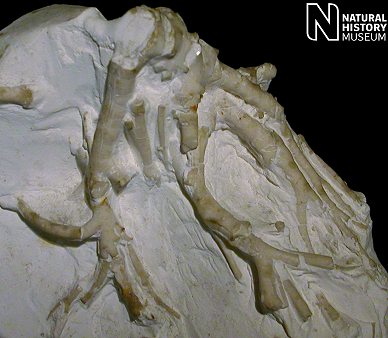 A A |
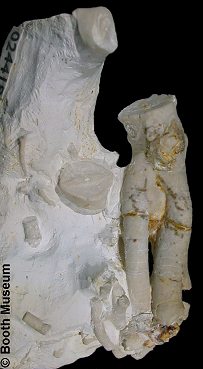 B B |
4). Bourgueticrinus sp., well preserved root networks; (A) x1.8, Gravesend, Kent, Beckles Collection, BMNH (British Museum (Natural History) London) E6042; (B) x1.8, Booth Museum, BMB 024418, by kind permission of John Cooper. Image A © 2005 The Natural History Museum, by kind permission.
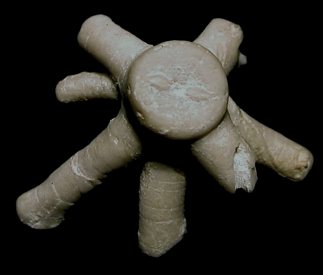 A A |
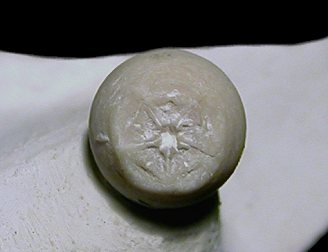 B B |
5). (A) Bourgueticrinus sp., isolated radix, x4.0, Lewes Nodular Chalk, Seaford Head, East Sussex, Randell Collection, RR1175; (B) Bourgueticrinus cf. fritillus, x7.5, upper surface of calyx displaying the articulating facets for the arms, Culver Chalk Formation, Gaster's Pit 2, south of Lancing College, near Shoreham, West Sussex, Randell Collection, RR1182.
|
|
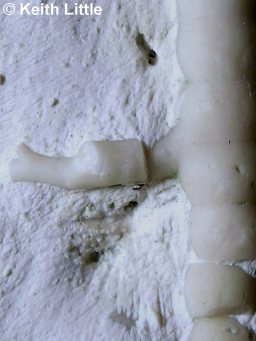 B B |
6). Bourgueticrinus cf. ellipticus, partial articulated individual with lateral branch (accessory root?) (Newhaven Chalk, Palm Bay, Thanet Coast, Kent, in the collection of Keith Little): (A) General view of specimen (x1.9); (B) Detail of branch from main stem (x5.0). Images © 2010 Keith Little, by kind permission.
|
|
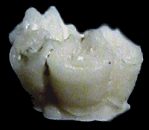 B B |
7). Bourgueticrinus? / Bathycrinus?, views of calyx elements (x10, White Chalk, Beachy Head, Randell Collection, RR 1631).